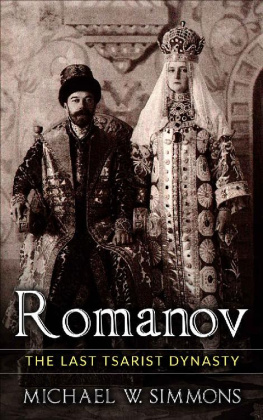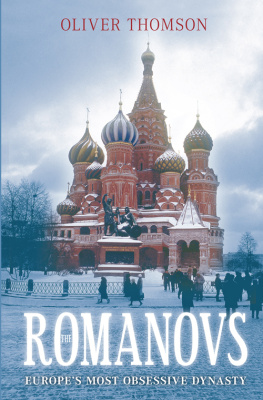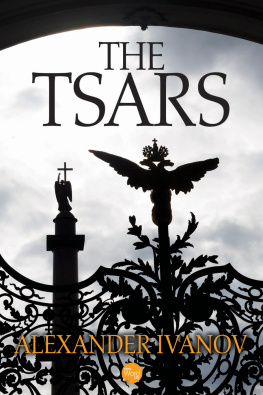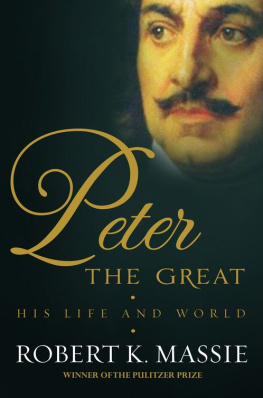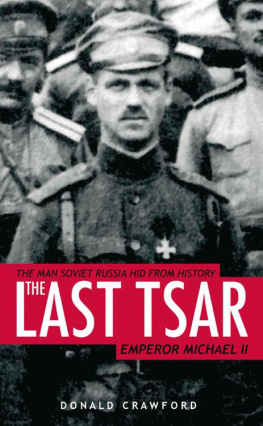Romanov
The Last Tsarist Dynasty
By Michael W. Simmons
Copyright 2016 by Make Profits Easy LLC
profitsdaily123@aol.com
Table of Contents
Chapter One: The Early Romanovs
Michael I (1613-1645)
Before the Romanovs, there were the Rurikids, the dynasty of Ivan the Terrible, who ruled from 1547 to 1584. Ivan the Terribleor, Ivan IVhad two sons by his first wife, Anastasia Romanova Zakharina-Yurieva. Ivan Ivanovitch, the eldest, was murdered by his father when he was 27, after the tsar attacked Ivans pregnant wife and caused her to suffer a miscarriage. When Ivan confronted his father over this ill deed, the tsar hit him over the head with his scepter. He regretted the deed instantly, but it was too late. The younger Ivan died a short time later.
Ivan the Terribles second son by his Romanov bride, Fyodor I, assumed the throne after Ivans death and reigned for fifteen years. Sometimes called Fyodor the Bell-ringer or Fyodor the Blessed, he was shy and retiring, extremely pious, and more interested in religion than in government. By Fyodors own wish, his brother-in-law, Boris Gudonov, acted as his de facto regent until Fyodor died childless at the age of forty, bringing the Rurikid dynasty to an end.
Boris Gudonov succeeded Fyodor as tsar, but when he died in 1598, his son, Fyodor II, ruled for only a few months before he and all the rest of his family were assassinated. Over the next fifteen years there ensued a period of civil war, famine, and political chaos, known as the Time of Troubles. Russia had no more tsars until 1613, when a delegation of nobles and bishops approached Michael Romanov, the frail teenage nephew of Ivan the Terribles wife, Anastasia, and begged him to accept the throne.
Michael Romanov was sixteen, physically weak, and beleaguered after having spent years as prisoner and in hiding with his mother, Martha. Their family had fallen into difficulty when Michael was very young, after Boris Gudonov accused Michaels father of treason. They had lived under threat ever since. In fact, when they were told that the delegation had arrived from Moscow, Michael and his mother were at first reluctant to leave their hiding place in the Ipatiev Monastery, because they knew there was a chance that this was a trick to deliver them into the hands of their enemies. But they agreed to meet the delegation regardless.
As the legend goes, the nobles greeted them on bended knee, begging Michael to accept the throne and deliver Russia from the turmoil that had engulfed it. As Romanov scholar Simon Sebag-Montefiore writes, they addressed him as, Sovereign Lord, Lord of Vladimir and Moscow, and Tsar and Grand Prince of all Russia, and proceeded to implore him:
Muscovy couldnt survive without a sovereignand Muscovy was in ruins, so an Assembly of the Land had chosen him to be their sovereign who would shine for the Russian Tsardom like the sun, and they asked him to show them his favor and not disdain to accept their entreaties and deign to come to Moscow as quickly as possible. Michael and his mother were not pleased. They told us, reported the delegates, with great fury and crying that He did not wish to be Sovereign and She wouldnt bless him to be Sovereign either and they walked off into the church.
The delegates did not give up. Point by point, they addressed each objection that Michael had made to their offer, and when he refused a second time, they pleaded with him for six hours, asserting that Russia would be destroyed utterly unless he saved them. Finally, he assented, and made his way slowly to Moscow.
Michael had been chosen to be tsar for the same reason that many leaders appointed by committee are chosen: he was the only candidate everyone could agree on. His family connection to the wife of Ivan the Terrible gave him legitimacy. His young age, and the fact that his father was in captivity in Poland, were also points in his favor. He was a mere child during the political turmoil of the Time of Troubles, so he hadnt made any enemies or committed any unforgivable deeds in the pursuit of power. Lastly, he had no nearby male relatives who might seek to exert power by influencing him. Let us have Misha Romanov, wrote one member of the Assembly, for he is still young and not yet wise; he will suit our purposes.
Michaels coronation took place on July 11, 1613, in the Kremlin, which was practically in ruins. The coronation of Russian tsars was a semi-mystical ceremony of tremendous religious significance. Because he was only descended from Anastasia Romanov, and not from Ivan the Terrible, Michael could not claim hereditary right of rule; but once he was crowned, he was Gods anointed ruler, a legitimacy that could not be gainsaid. Russia was heavily influenced by Byzantine culture. When Michael was crowned, he was seated on the throne of Monomakh, named for an emperor of Constantinople, and given a Mongol helmet to wear. Following the ceremony, he established a precedent that every Russian tsar that followed him would continue: he visited the nearby Archangel Cathedral and prayed at the graves of Ivan the Terrible and Fyodor I.
No sooner had Michael taken the throne than his throne was in jeopardy. Russia was under threat from Sweden and Poland, and a pretender to the throne, claiming to be the son of Ivan the Terribles dead son Dmitry, was still at large. Furthermore, Russia was bankrupt. In order to restore the grandeur of the throne and establish the supremacy of the dynasty he was founding, Michael had to rely on the wealth of his loyal retainers. Their money and jewels provided Michael with the necessary elements of royal showmanship, and Michael, as tsar, in turn granted them favor and influence, allowing them a place at court in proximity to the seat of power. Many of the families that grew close to Michael in the early days of the Romanov dynasty kept their elevated and influential status until the fall of the monarchy.
The style of the Russian monarchy held that the tsar was the little father to his people, especially the peasants, who saw him as kind and benevolent, as opposed to their more immediate rulers, the land-owning nobles, whom they blamed for their miserable lot in life. Likewise, the nobles and courtiers who served the tsar acknowledged his paternalistic role over them, signing their letters to him with childish diminutives such as Sasha and Misha, and referring to themselves as his humble slaves. This was one of the chief differences between the Russian court and the royal courts of Europe. Elizabeth I of England, who was a contemporary of Ivan the Terrible, addressed, for example, the Duke of Northumberland as your grace and lesser nobles as my lord. This form of balance of power was unknown in Russia, where the tsar ruled his court and his nobles as a father ruled his family, brooking no challenge to his authority. In exchange, the tsar allowed his nobles uncontested authority to rule their hundreds of thousands of serfs exactly as they pleased, tsars on their own estate as surely as Michael was tsar in Moscow.
For all this, Michaels reputation as tsar was for gentleness, meekness, and piety; he was known for the docility of his temper, and scarcely ever indulged in angry outbursts against his courtiers. Some tsars guarded their personal security by maintaining a fearsome and implacable persona, but Michael chose to rely on his personal enforcer, Prince Yuri Suleshov, who kept his ear to ground for any treasonous rumblings in the court.
The other vital step necessary to securing Michaels position on the throne was choosing a wife. In later centuries, the tsars of Russia would select brides from amongst the royal houses of Europe, but in Michaels day, when Russia was still considered strange, savage, and politically unstable, European families were largely unwilling to send their daughters there as brides. Thus, royal marriages were arranged via brideshows.
Next page
